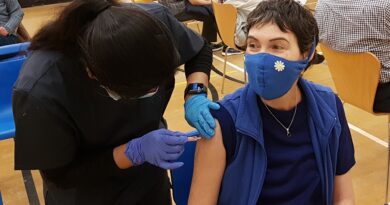Déjà vu? The Parallels Between Polio and COVID-19 Vaccine Campaigns
When COVID-19 first reared its ugly head last year, many drew comparisons to another highly contagious virus – polio. According to an article by AARP, how the country has handled the COVID health crisis is strikingly similar to what happened with polio: restrictions were placed on travel, quarantines were common, handwashing was urged, and infected patients in the hospital were not permitted to have family by their side. And, just like with polio, health officials today say vaccination is the best way to eradicate (or at least try to control) COVID.
Although the outbreaks came 65 years apart, the magazine discovered many parallels between the vaccine rollouts and illustrated them in a series of photographs. For instance, in the 1950’s states set aside millions of dollars to purchase and distribute free polio shots. Today, COVID vaccines are readily available and free to all.
In both cases, celebrities were called on to promote vaccination. Elvis Presley received his shot on The Ed Sullivan Show. Today, political leaders, movie stars, professional athletes, musicians, and more have all rolled up their sleeves for the cameras, including country music star Dolly Parton who donated $1 million to help scientists develop the Moderna vaccine.
We are fortunate that the polio vaccine has essentially eliminated this debilitating disease, but not before it afflicted one of our country’s most influential presidents. President Franklin Delana Roosevelt was paralyzed by polio and served his term in the Oval Office in a wheelchair. In addition to being America’s only physically disabled president, FDR’s legacy includes signing the Social Security Act into law in 1935, thus laying the foundation for the program millions of American retirees rely on today.
The Seniors Trust works to pass legislation to improve Social Security. We urge Congress pass the Social Security Expansion Act. This landmark piece of legislation will provide bigger monthly Social Security benefits, establish a more realistic cost-of-living adjustment (COLA) for seniors, and guarantee the long-term solvency of the Social Security program.




